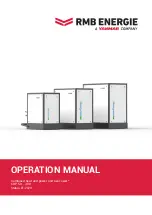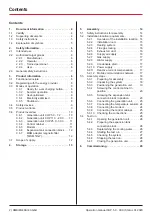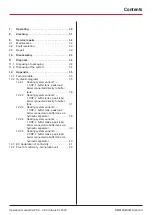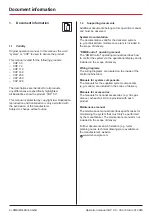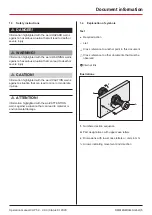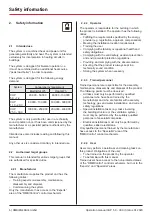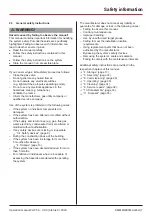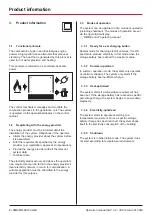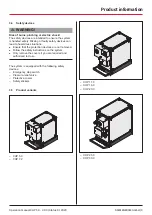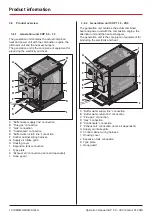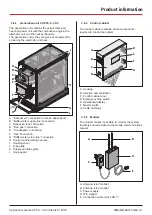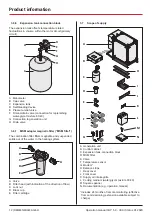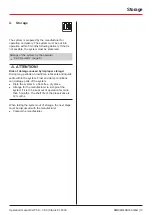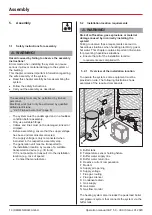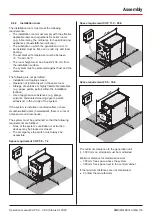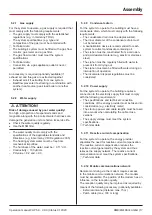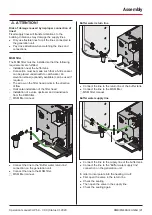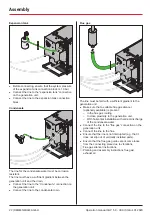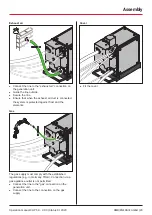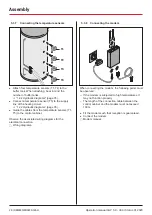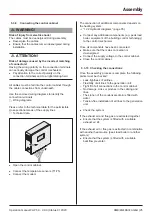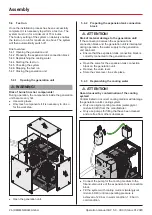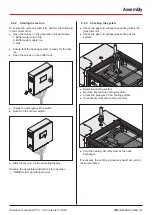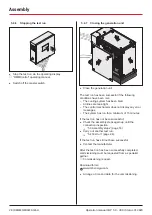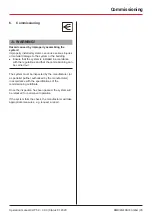
14 | RMB/ENERGIE GmbH
assembly
Operation manual CHP 5.0 - 30.0 | Status 01.2020
5. Assembly
5.1 Safety instructions for assembly
D
WARNING!
Hazard caused by failing to observe the assembly
instructions!
Errors made when installing the system can cause
serious injuries or material damage to the system or
the building.
This chapter contains important information regarding
the safe assembly of the system.
A
Read this chapter carefully before assembling the
system.
A
Follow the safety instructions.
A
Carry out the assembly as described.
The assembly must only be performed by trained
personnel.
Electrical work must only be performed by qualified,
skilled electricians.
D
“2.2.3 Trained personnel” (page 6).
B
The system must be undamaged and in a faultless
condition before assembly.
B
Only use suitable fittings.
B
Cables and lines must not be damaged, kinked or
crimped.
B
Before assembling, ensure that the supply voltage
has been and remains disconnected.
The supply voltage is only reconnected when
instructed in the respective assembly step.
B
The generation unit must be transported to
the installation location by means of a suitable
transportation device (e.g. lift truck).
If it is not possible to transport it to the installation
location (e.g. lack of space):
A
Contact the manufacturer.
5.2 Installation location requirements
D
WARNING!
Risk of suffocation, gas explosions or material
damage caused by incorrectly installing the
system!
Failing to observe these requirements can lead to
hazardous situations when handling electricity, gas or
hot water. This chapter contains important information
for preventing hazardous situations.
A
Ensure that all of the installation location
requirements are complied with.
5.2.1 Overview of the installation location
To operate the system, some equipment must be
provided on site. The following illustration shows
examples of the required components.
A
B
I
G
J
K
L
M
N
E
H
C
D
F
A Buffer tank
B Temperature sensor holding fixture
C Buffer water supply line
D Buffer water return line
E Reactive current compensation
F Modem
G Supply air opening
H Supply voltage
I Flue gas routing
J Flue gas silencer
K Condensate drain
L Gas supply
M Gas meter
N Gas flow monitor
The heating system also includes the peak load boiler
and pipework system that connects the system via the
buffer tank.

